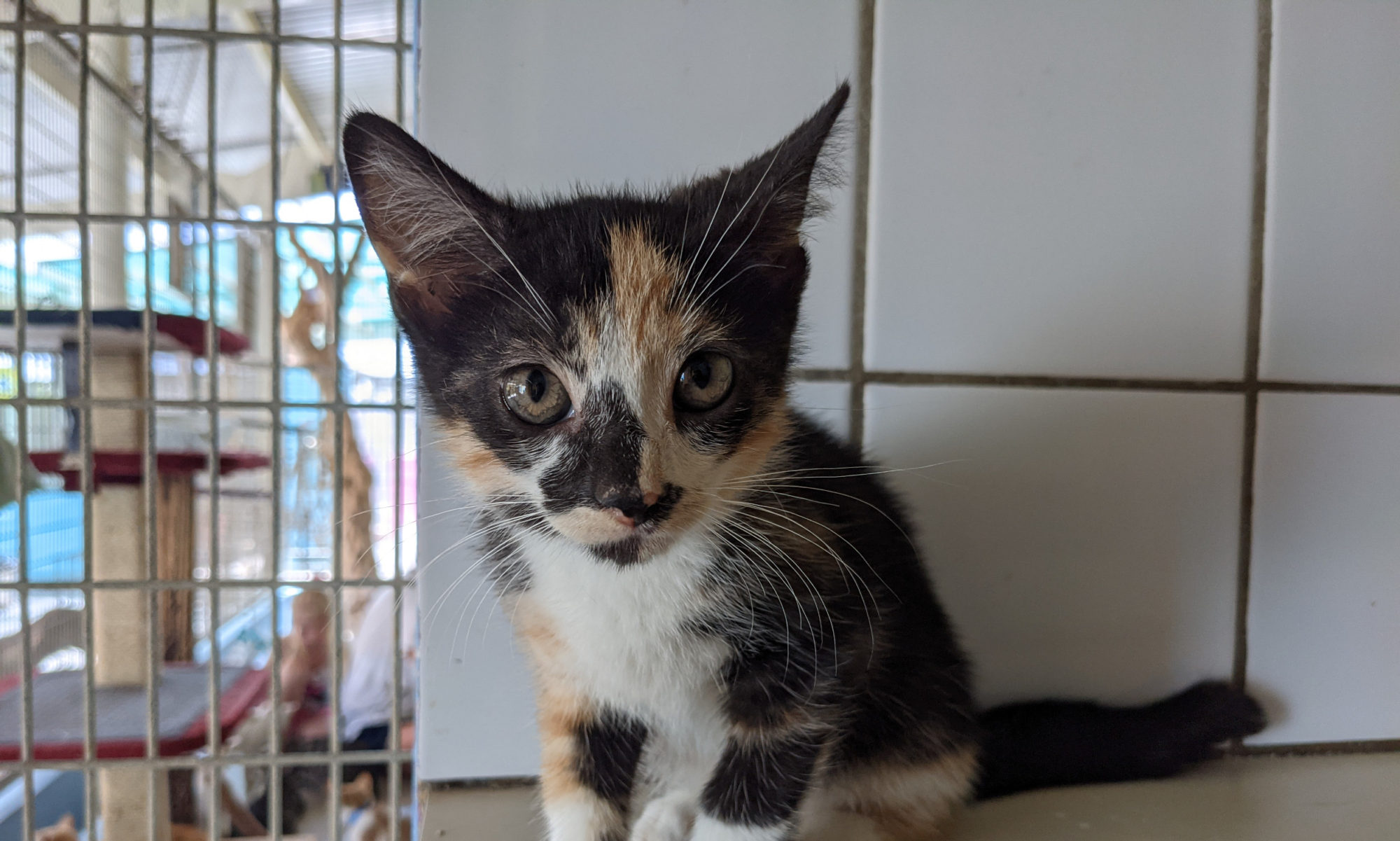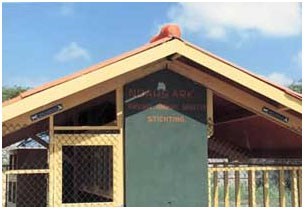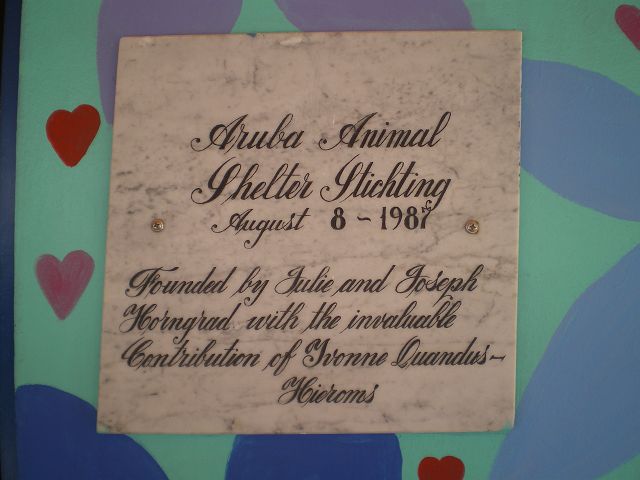Nobody knows when the first cats and dogs arrived in Aruba but we do know that the problems with abandoned pets is not a recent thing.
The dog law, which the police still use today, was implemented on 1st February 1955 and was drawn up to deal with the problems of stray dogs even in those days.
With the support of the Loge of Vrijmetselaars, the Aruba Association for the Prevention of Cruelty to Animals started the first Animal Shelter in 1950. This shelter was located in an old reconstructed bunker at the airport.
Thanks to Gunther Bosse, a volunteer at this first shelter and still a dedicated animal lover, we have pictures of this historic occasion. On this picture you can see mr. Bosse with one of the puppies.
Back then, the dogs were housed in small kennels with woodscrews on the bottom and these were changed twice a week. Under a roof the food (leftovers from the local butchers) was cooked together with rice.
Scurfy was treated, according to local animal health care, with old motor oil and the dogs were soaked in a bath with tick powder provided by the vet to get rid of these unwanted pest.
 (In the picture) The treatment of scurf:
(In the picture) The treatment of scurf:
The first three weeks the dogs were covered every day in old motor oil. This was then washed off with Kerosene and then the dogs were bathed with soap (“Lifeboy” no less, because it foamed and smelt so good!). Then they were rubbed with baby oil for a few days to make their skin soft and supple again. At the end of this treatment the hair was usually already growing back.
To try to keep the animal shelter in existence the Animal Shelter Aruba was founded in 1952, however in less than ten years the shelter ceased to exist. Lack of funding and the departure of some hardworking volunteers like Leo van Doren and Miss Jansen, who cooked the food, were the main reasons for this tragic loss.
According to the Slacht- and Keurings Law of 1933, the position of a Director must be fulfilled by a vet. The healthcare and daily treatment for today’s pets, like cats and dogs, was not what it should have been. It was better to take your dog to your own doctor for treatment with antibiotics as vaccinations or medicine for heart worm did not exist. This situation only improved during the last quarter of the 20th Century.
In 1987, vets Theo Wools and Ed van der Hoeven decided to employ an assistant for their veterinary clinic, Yvonne Hieroms. She quit her job at the veterinary laboratory and commenced part-time employment as a veterinary assistant. In her new job she was confronted with a never-ending stream of unwanted dogs and cats, which the government vets put to sleep on a daily basis.
She started calling people who she knew wanted a dog, when, in her opinion, there was a good, healthy dog available. Later she started taking in dogs from the holding areas who looked healthy and for which she was sure she could find a new owner. She financed the feeding and care herself until she had found someone who wanted to take the dog. This initiative would have possibly died down if it wasn’t for Joseph and Julie Horngrad, an American couple who had resided on Aruba for some time and who in 1986 decided to do something about the suffering of animals.
The story told is that Julie went one day to buy a blouse and at the entrance of the store found a little stray kitten. Instead of buying a blouse she decided to start an animal welfare organisation instead!
And thus, on 9th October 1986, she and Joseph attended at the notary to start the Aruba Animal Shelter Foundation. Together with both Theo Wools from the veterinary service and Yvonne Hieroms, plans put in place to transfer the old stables of the veterinary service into appropriate housing for the cats and dogs.
Collecting funding was carried out by Julie and Joseph who also donated a fair amount of money themselves
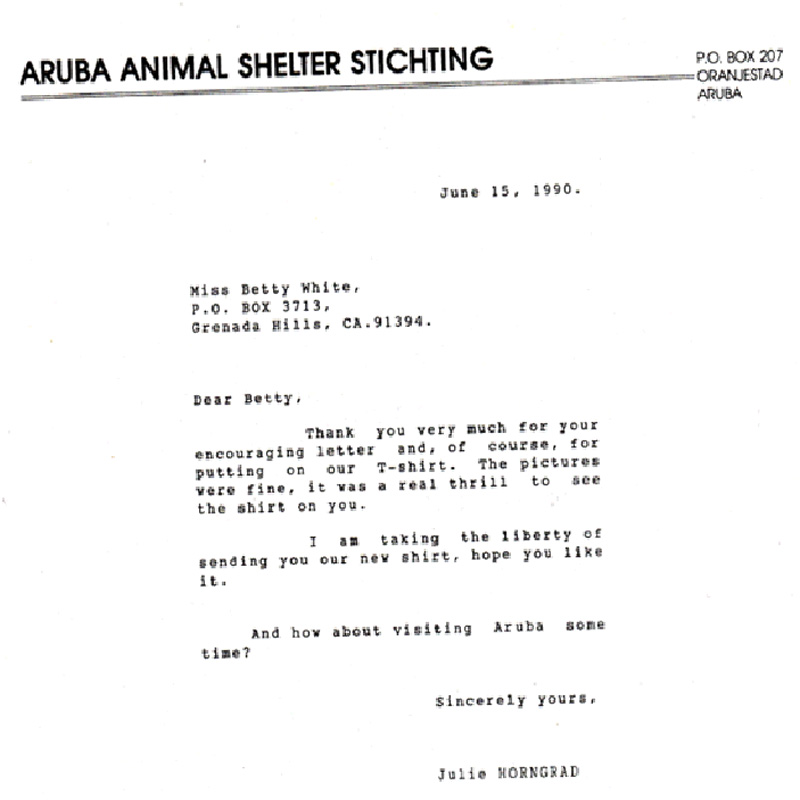
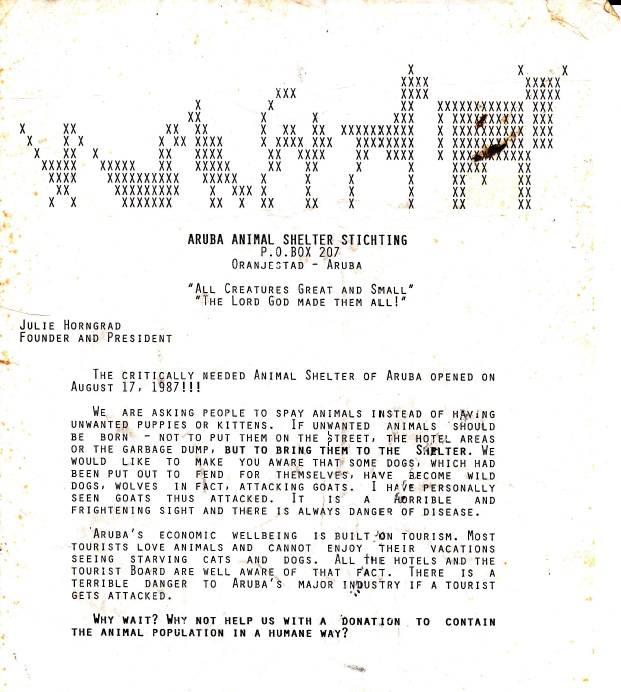
In August of 1987 “The Shelter”, located on the terrain of the veterinary service in Arendstraat, was officially opened by Minister Edgar “Watty” Vos.
In 1991, vet Pieter Barendsen took over as Chairman at the request of Julie Horngrad and more people joined the Board. Thanks to the greater number of volunteers the workload could then be shared and other activities, such as the traditional Open House (around Animal’s Day on 4 th October) and Dog Shows were introduced to the island.
When the slaughterhouse moved to a different location in the mid 90’s, the shelter lost its housing. The vets were, however, able to convince the government of the necessity for an animal shelter and a piece of land was made available for the shelter at it’s current location in Wayaca, next to veterinary clinic. The Board and volunteers worked very hard and soon enough money had been raised to build a new shelter. On Animal’s Day, 4th October 1996, the new shelter at 128-B Wayaca was officially opened.
